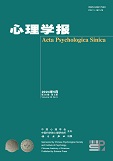Mating behavior is an important research topic. Gift is a crucial medium for conveying information and intimacy. However, previous literature on mating behavior has rarely explored how gifts affect mating intention. Moreover, most previous studies on gift-giving have been limited to the influence of gifts on general interpersonal relationships, and rarely focused on mate selection or courtship situations. The current research examined the influence of gift category (feasible vs. desirable) on the recipient's mating intention and its inner psychological mechanism. The current research proposed that recipients would show higher mating intention for the wooer who sent the feasible gift (vs. desirable gift), because the feasible gift represents a higher level of psychological closeness between the gift giver and receiver. Joint (vs. separate) consumption moderates this effect. Across 6 studies, including one field study, our research provided empirical support for these predictions. Study 1 adopted a within-subject design, and 65 participants were recruited. Participants were first asked to imagine they were single and two wooers sent them two gifts on their birthday. They then saw two scenarios, a pen scenario and a shopping card scenario. In both two scenarios, two wooers sent feasible or desirable gifts, which were checked and chosen as stimuli by pre-study (N = 48). The feasible pen was practical and easily portable but mediocre in aesthetics. The desirable pen was state of the art and fancy, but not very portable due to its weightiness. The feasible shopping card was for a 4-stars dessert shop, which was about a 5-min walk away. The desirable card was for a 5-stars dessert shop, which was about 1 hour drive away. After reading these materials, participants indicated their mating preference between the two gift givers. The results indicated that participants showed high mating intention for the gift-giver who sent feasible gift, both in pen and shopping card scenario.
Study 2 was a one-factor (feasible vs. desirable gift) between-subject design (N = 265). Participants imagined they received a dessert shop card as a gift from a wooer, and then were randomly assigned to feasible or desirable gift condition. The gift information was the similar with Study 1 except that the feasible card was for a 3.5-stars dessert shop, and the desirable card was half an hour drive away. Participants were then asked to indicate their mating intention and perceived psychological closeness to the gift-giver. Lastly, their age, gender, relationship status were collected as control variables. Results replicated the findings of Study 1, and the mediating role of psychological closeness was supported.
In Study 3, we changed the manipulation of gift category to rule out knowledge extent and perceived exclusiveness as possible explanations. Specifically, Study 3 was a one-factor (feasible vs. desirable gift) between-subject design (N = 257), and the feasible gift was a ticket for an exhibition which has a certain popularity on social media, and there was no specific time limit for the ticket. Visitors can use it any time. Contrastly, the desirable gift was a ticket for an exhibition which was extremely popular on social media, but the time slot for this ticket was 7:30 am on Monday. Via two pre-studies, the manipulation for feasibility and desirability was successful and the attraction for these two gifts kept the same. The procedure of this study was similar with Study 2, except that we measured social status inference and price as another two possible explanations. The results supported psychological closeness as mediator rather than other variables.
Study 4 was designed to further examine the underlying role of perceived thoughtfulness and perceived closeness. It was a one-factor (feasible vs. desirable gift) between-subject design (N = 242). The procedure was the same as Study 2 except that we measured participants’ perceived thoughtfulness and how much they were certain to consume the gift following perceived closeness. Results revealed that perceived thoughtfulness and perceived closeness played the chain mediating role of the effect of feasible (vs. desirable gift) on mating intention. Furthermore, this mediating effect still existed after controlling consumption certainty.
Study 5 examined the moderating role of joint consumption, and was a 2 (feasible vs. desirable gift) ×2 (joint vs. separate consumption) between-subject design (N = 254). Participants imagined they received a painting course as a gift from a wooer and then randomly assigned to one of four conditions. The manipulation of gift category was similar with Study 2. As for the consumption process, in the joint consumption condition, participants were told that the course was for two persons, and the receiver would consume it with the gift-giver jointly. In separate consumption condition, participants were told that the course was only for one person. We then measured mating intention and psychological closeness. Mediated moderation was supported by the results.
Study 6 was a field study and we conducted a “Gift Represents You” single youth dating activity (N = 204). Participants were randomly assigned “gift-giver” or “gift-receiver”. Each gift-giver was asked to choose one gift (50 ~ 200 RMB) and write some descriptive sentences (100 ~ 250 words), and the receiver was asked to rate 10 gifts indicating his/her mating intention to the gift-giver. Each gift would be rated by 10 receivers. Two separate coders coded the level of feasibility and desirability of each gift according to the gift and its descriptive sentences. We examined both ANOVA and regression, and the results were replicated again in the field setting.
Overall, the current research is the first to explore the impact of gift on the recipient's mating intention, with focusing not only on the gift itself, but also on the subsequent consumption process of the gift. Our findings contribute to the mating behavior literature as well as the gift-giving literature. Besides, the current research explores the relationship between construal level and psychological distance from the perspective of mate selection behavior, which is new for construal level theory.




